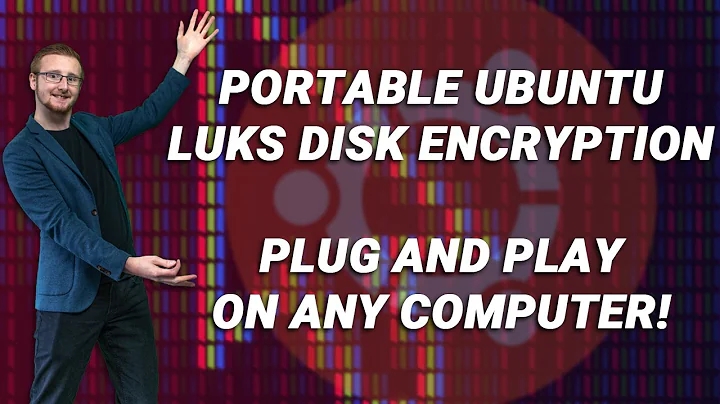installing ubuntu with full disk encryption including encrpyted boot on i-USB Pendrive ii-A regular HDD
Solution 1
It's extremely useful to have an "on-the-go" Ubuntu running on USB with full disk encryption. Imagine you can boot up on almost every computer with your USB, and work in your own personalized environment anywhere, without carrying a notebook. I managed to install Ubuntu 16.04 in a USB HDD this way:
Download the latest Ubuntu installer.
Make a bootable pendrive. I use LiLi on Windows and
ddcommand on Linux. You can google it.Boot up from Ubuntu pendrive. The Ubuntu installer detects the internal HDD and offers to install Ubuntu and keep the other OS, or make a clean install, optionally with encryption. However, this window only shows the internal HDD. If you want to install to USB, you have to select the "Other" option. But it is really hard to setup an encrypted install manually.
I did the following: take out my internal HDD from my notebook, and boot up Ubuntu installer again. If the USB drive is connected, but the internal HDD is taken out, the installer will display the USB drive as primary drive and offers to make a clear install with encryption. You can also choose to overwrite your disk before install if you want.
Start the installation with your preferred options. Same as usual from now on.
I tested my USB Ubuntu on 5 different computer from old to "new" and it works like a charm. No problem with drivers, not a single error or question window when I boot up on a different PC.
Solution 2
It can be incredibly beneficial to encrypt everything but your bootloader; obviously, your bootloader must remain cleartext. One answer here suggests to use the alternate installer to encrypt almost everything, but include unencrypted content on the internal hdd. This invites an "Evil Maid" attack: during a period when your computer is physically insecure an attacker may modify passphrase collection to store/send your key.
I have found the best approach makes use of special GRUB features for FDE, with GRUB installed on a USB. Detailed instructions here and here may be found for Archlinux, but the processes are easy to adapt and combine for your purposes.
Related videos on Youtube
SecureDigital
Updated on September 18, 2022Comments
-
SecureDigital over 1 year
Hi how to install Ubuntu 12.04+ with full disk encryption including encrypted boot partition : a- to a USB drive ie. 16GB or 32GB b- to a HDD
-
jobin about 11 yearsMay I know why do you want to encrypt your boot directory, or even your / for that matter?
-
Eliah Kagan about 11 years@Jobin Plenty of people encrypt their home directories or their entire filesystem; this is hardly a niche case. Is this information really relevant to solving the problem? (If so, I recommend clarifying why--if not, I recommend deleting your comment and flagging mine as obsolete.)
-
jobin about 11 years@EliahKagan: I am seriously not aware of any good effects encrypting your / directory can have. Encrypting your Home folder is absolutely fine, but why "/". Hope I am not rude here, please, with utmost sincerity I ask. I don't intend to turn away the attention of the asker, but let's make it clear.
-
Eliah Kagan about 11 years@Jobin One reason is that files outside your home directory can still reveal sensitive information. Another reason is that it's considerably harder for someone with physical access to a machine with
/and/bootencrypted to modify the system maliciously. Like I said, this is not a niche situation, plenty of people do this. You may want to post a new question asking why it may make sense to encrypt/and/boot. But it's really irrelevant to the goal of answering this one particular question. -
jobin about 11 yearsOk fine. That was nice of you. I'll post it sometime later, though even I really don't feel the need to post this as a question.
-
-
Alaa Ali almost 11 yearsWelcome to Ask Ubuntu TheHelper! While providing a link is okay, it's better to include the essential parts of the steps taken in that link, or at least a brief explanation of what is happening, in case the link dies. I'm talking about the last link (step 7, which is the essential part of the answer), since the previous steps are well documented elsewhere. If you find the same steps mentioned elsewhere in the site, link that instead.




![3 Ways Remove Write Protection From USB Pendrive | "The disk is write protected" [Fix]](https://i.ytimg.com/vi/Sy-5OdaxNuc/hq720.jpg?sqp=-oaymwEcCNAFEJQDSFXyq4qpAw4IARUAAIhCGAFwAcABBg==&rs=AOn4CLBkSo92sU72yarLm3fGHbWzAtkF4Q)